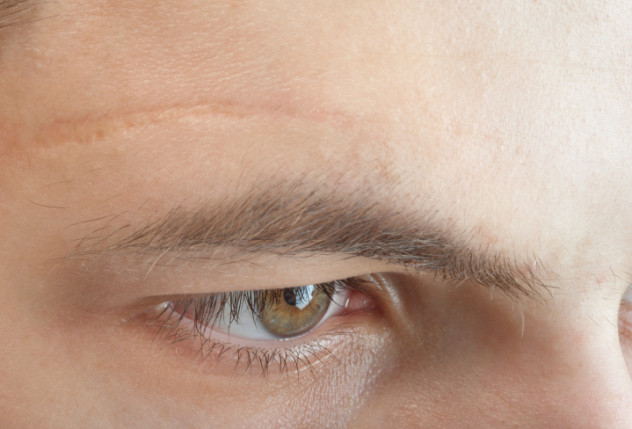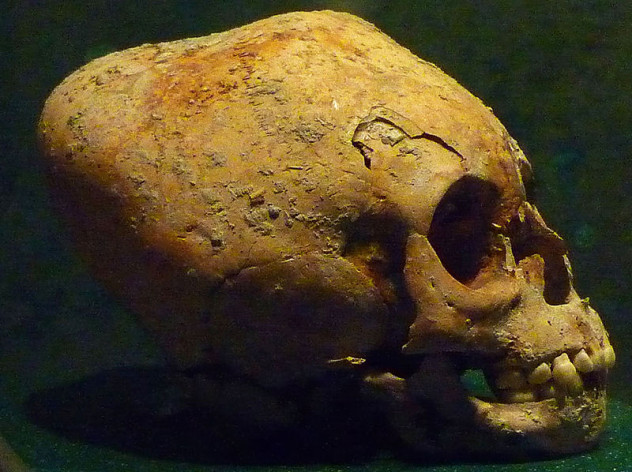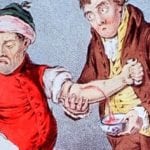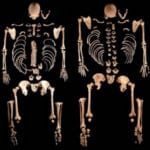 History
History  History
History  Animals
Animals Ten Times It Rained Animals (Yes, Animals)
 Mysteries
Mysteries 10 Devastating Missing Child Cases That Remain Unsolved
 Creepy
Creepy 10 Scary Tales from the Middle Ages That’ll Keep You up at Night
 Humans
Humans 10 One-of-a-kind People the World Said Goodbye to in July 2024
 Movies and TV
Movies and TV 10 Holiday Movies Released at Odd Times of the Year
 Politics
Politics 10 Countries Where Religion and Politics Are Inseparable
 Weird Stuff
Weird Stuff 10 Freaky Times When Famous Body Parts Were Stolen
 Miscellaneous
Miscellaneous 10 Interesting Things Manufacturers Stopped Making and Why
 Gaming
Gaming 10 Funny Tutorials in Games
 History
History 10 Desperate Last Stands That Ended in Victory
 Animals
Animals Ten Times It Rained Animals (Yes, Animals)
 Mysteries
Mysteries 10 Devastating Missing Child Cases That Remain Unsolved
Who's Behind Listverse?

Jamie Frater
Head Editor
Jamie founded Listverse due to an insatiable desire to share fascinating, obscure, and bizarre facts. He has been a guest speaker on numerous national radio and television stations and is a five time published author.
More About Us Creepy
Creepy 10 Scary Tales from the Middle Ages That’ll Keep You up at Night
 Humans
Humans 10 One-of-a-kind People the World Said Goodbye to in July 2024
 Movies and TV
Movies and TV 10 Holiday Movies Released at Odd Times of the Year
 Politics
Politics 10 Countries Where Religion and Politics Are Inseparable
 Weird Stuff
Weird Stuff 10 Freaky Times When Famous Body Parts Were Stolen
 Miscellaneous
Miscellaneous 10 Interesting Things Manufacturers Stopped Making and Why
 Gaming
Gaming 10 Funny Tutorials in Games
10 Bizarre Fads That Thankfully Stayed In The Past
Planking, twerking, the Ice Bucket Challenge—we don’t have to reach far into our memories to come up with some truly strange trends that we’ll surely have trouble explaining to our grandchildren. On the other hand, the cool kids of ancient history were into some even stranger trends.
10 Polish Plaits
Plica polonica happens to a person’s hair when it is neither washed nor combed over a long period of time. It becomes sticky, irreversibly entangled, and infested with lice as a result of the lack of hair care. The style became known as “Polish plaits” because of how popular it was in 14th-century Poland.
Widespread among the peasants of Poland, a superstitious belief was associated with the plaits. The tangles were believed to be some sort of charm to bring good health. People applied fat to their already sticky and matted hair and covered it with woolly caps—even in the summer—to encourage the plaits to grow and knot.
By the 17th century, people believed that illnesses leave the body through the hair. These superstitious beliefs were so strong that people lived their entire lives without cutting off their Polish plaits. The most famous person to sport a Polish plait was King Christian IV of Denmark. King Christian’s plait was in the form of a pigtail decorated with a red ribbon.
9 Dueling Scars

According to a study, women are more attracted to men with scars—albeit only for short-term relationships. This might be what influenced the popularity of the renommierschmiss (also known as “dueling scars“) in the early 1900s in Germany. A dueling scar on the face was considered a mark of honor. Dueling, which was legal in post-war Germany, allowed students to get their scars. It was believed that the more bloody a man’s scar, the more masculine he was—and the more honorable he became. So, most people got into duels not to win, but to get hurt deliberately in the face.
Not everybody was brave to take part in duels. Some of those who wanted scars but were afraid of the duels cut themselves with razors and rubbed horse hair into the wound to aggravate the injury. Others paid doctors to slice off some parts of their cheeks. Many high-ranking members of society, from doctors to professors to Nazi officials, had these scars.
8 Head-Binding

Foot-binding in ancient China is one of the most notorious body modification trends from history. The feet are guaranteed to break, and the practice can lead to disability. Head-binding was similarly the intentional and irreversible deformation of the skull.
This trend was practiced by the ancient Egyptians and Maya. In some societies, deformed heads were symbols of intelligence and high social status. In other societies, head-binding was practiced for only aesthetic reasons.
The deformation usually occurred when babies were only days old because infant skulls are softer and more pliable. Some of the methods of binding included wrapping the skull with a cloth and and vines or placing the baby’s head between pieces of wood to flatten it. Parents also usually massaged their babies’ heads until the desired shape was achieved.
7 Mokomokai
Mokomokai were the preserved heads of deceased relatives of the Maori in New Zealand. The heads were tattooed and kept for veneration. They were boiled or steamed to aid preservation.
In the 18th century, British sailors tried purchasing them from the natives as souvenirs of their travels. The Maori were unwilling to part with the heads at first, but as wars among tribes broke out, their reluctance disappeared. They began selling the heads to British sailors to fund their tribal wars.
The sailors returned to Europe and sold the heads to collectors and ethnographers, who paid handsomely for them. As a result of the trade, the tribal wars became even more deadly as tribes with European weaponry defeated other tribes and sold their victims’ heads. Demand for the mokomokai increased rapidly. European buyers began choosing the head they wanted to buy from living slaves. In the end, Maori markets were saturated with weapons while the European market was flooded with heads.
6 Eating Arsenic

To most of us, the word “arsenic” is synonymous with “poison.” It was a popular poison of choice for most murderers in the dark ages, partially because the effects of arsenic poisoning closely resemble the effects of cholera, a common disease at that time. The people of Styria, a region of ancient Austria, thought otherwise.
In 1851, it was discovered that poor peasants of Styria loved consuming arsenic. The peasants of Styria took arsenic because it made them appear healthier. Arsenic aided their breathing while they worked or traveled the mountainous terrain that surround their villages.
The Styrians began their arsenic habits by taking the poison in very small quantities. Gradually, as they built up resistance to its effects, they increased the dose to levels that would kill an average person. Most showed no sign of chronic illness when they used it, but some suffered from loss of appetite, anxiety, and spasmodic pain as withdrawal symptoms.
5 Crakow Shoes

The crakow was a trendy shoe with incredibly long toes. This style of shoe was incredibly popular in 15th-century Europe. The shoes were supposedly named after the Polish capital city of Krakow.
The long toe of a crakow is called the “poulaine.” The poulaine made walking difficult. People who wore them needed to support them with whalebones attached to their legs or moss stuffed into the end. These solutions helped prevent the poulaine from getting in the way when walking.
At the height of the craze, laws were passed to identify social class by the length of a person’s poulaines. A noble’s shoe could be as long as twice the length of his foot, while a merchant was allowed one foot, and a peasant half. However, the laws failed.
In the 1396 Battle of Nicopolis, the crusaders, already losing to the Ottomans, had to cut off their poulaines so they could run away.
4 Neck Extension
The Padaung and Kayan Lahwi women of Burma and Thailand are famously called “giraffe women” because of their strange fashion. This trend began to fade out of popularity among the women in the 1990s. The women traditionally wore brass coil rings to extend the length of their necks. As they grew, more coils were added to maintain the illusion of a beautiful, long neck.
A female member of the society would start wearing the coils at the tender age of five, starting with 1 kilogram (2.2 lb) of brass coil. At age eight, another kilogram was added, and more would be added as she grew to adulthood. A Padaung woman was expected to wear the ring for the rest of her life. If the rings were removed, the women would find that their necks were too weak to support their heads, and eating became difficult.
The origin of the trend is a mystery, and the reported reasons for the bizarre trend vary. Some say it made women less attractive to slave traders. Others are of the opinion that the trend was invented to protect the throat from tigers. However, most people think that the trend originated because the people of Padaung considered long necks to be beautiful.
3 Dance Marathons
The dance marathon, like other trends of the 1920s such as flagpole sitting and mountain climbing, was seen as a form of entertainment and competition. In 1923, Alma Cummings, a 32-year-old American woman, broke the dance marathon record set earlier in Britain by dancing nonstop for 27 hours. In the process, she wore out six different partners. Soon, others were inspired to join the trend in a bid to surpass Cummings’s record. One of the first promoters to popularize the dance marathon was known mysteriously as Mr. McMillan.
Mr. McMillan was the owner of a dancing academy in Houston. He began charging spectators to watch the contestants and cheer them on. He urged the contestants to entertain the crowds and gave huge cash prizes to the winners of this competition. While Mr. McMillan made money from his shows, he also cared about the contestants and their well-being. However, after 1923, the dance marathon went from entertaining to downright bizarre.
Entertainment promoters gradually took over, seeing the marathons as a means of making money. The promoters required each dancer rest for 15 minutes after dancing for hours. This seemed like a good move at first because early dance marathons had no rest time. The rest soon allowed dancers to drag the competition out for days, weeks, or even months. The promoters found ways to make the dance marathons longer and more interesting by including side attractions like boxing and special performances by guest artists while the dancers danced. A recorded competition ended after the winners danced for more than 16 weeks, although they were allowed to take five-minute naps each hour.
Dance marathons that used to be about obtaining the world record and providing entertainment became gruesome endurance tests. By 1930, states began banning dance marathons after critics pointed out how promoters exploited poor couples for their own financial gain.
2 Intentional Train Crashes

In the early 19th century, a rather dangerous and chaotic trend of intentional train crashes began. The first of this series of wrecks was suggested by Missouri, Kansas, and Texas Railroad marketing manager William George Crush. He told the railway management that by setting two trains up for collision in front more than 40,000 people, more people would be encouraged to take the train. Despite safety assurance from mechanics, two boilers of the engines exploded upon impact and led to the deaths of three people, and many more sustained injuries. The railway management promptly fired Crush for what seemed like a stupid idea but discreetly rehired him a few days later because his idea worked: Everyone was talking about the event, and ticket sales went through the roof.
This strange stunt inspired even more deliberate train crashes. More than 100 purposeful crashes occurred from 1896 to 1932. Most of these crashes were organized by a promoter called “Head-On Joe” Connolly. These crashes were usually held for publicity at fairs. The 1913 California State Fair featured a crash. The popularity of deliberate train wrecks dwindle during the Great Depression. It’s expensive to crash a train, you know.
1 Bathing In Donkey Milk

According to the famous Greek physician Hippocrates, donkey milk can be used to cure numerous ailments including poisoning, liver troubles, fevers, and several infectious diseases. This prescription was what led to a donkey milk bathing fad.
Cleopatra was said to have bathed in donkey milk every day. She supposedly needed about 500 donkeys to produce the milk she bathed in daily to preserve her beauty and youthfulness. Cleopatra was not alone in her quest for the perfect skin. Poppaea Sabina, the second wife of Roman Emperor Nero, and Pauline, sister to Napoleon Bonaparte, were also big fans of bathing in donkey milk.
According to the UN’s Food and Agriculture Organization, donkey milk does have some health benefits. In the 20th century, it was used as a substitute for human breast milk because it is more similar in composition than cow’s milk. But since an average donkey only produces about one liter of milk in a day, bathing in the milk is rather wasteful.








